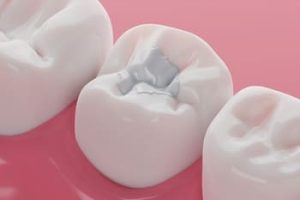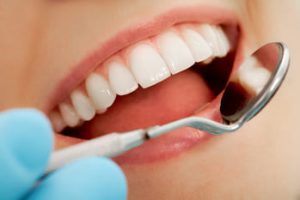Contents
Dental procedures are integral to maintaining oral health, yet they often bring about discomfort or pain, which can be quite unsettling for patients. One common issue that arises after a dental filling is tooth pain, a condition that can cause significant distress and confusion. This article will delve into the causes of tooth pain after filling, explore potential solutions, and offer guidance on preventive measures to ensure a smoother recovery and overall dental well-being.
The Basics of Dental Fillings

Causes of Tooth Pain After Filling
Tooth pain after a filling can stem from several factors, each requiring different approaches for relief. Here are some common causes:
1. Tooth Sensitivity
Tooth sensitivity is a prevalent issue following a filling procedure. The exposed dental pulp, containing nerve endings, can react to hot or cold foods, leading to discomfort. This sensitivity is typically temporary, often subsiding within a few weeks as the tooth adjusts to the new filling.
2. Incorrect Bite Alignment
An incorrect bite alignment can occur when the filling is too high, causing the filled tooth to bear more pressure than other teeth during biting and chewing. This imbalance can result in tooth pain and requires an adjustment by the dentist to ensure proper bite alignment.
3. Referred Pain
Referred pain is a phenomenon where discomfort is felt in teeth other than the affected tooth. This can happen due to nerve stimulation during the dental procedure, causing pain in other teeth or areas of the mouth.
4. Allergic Reactions
Although rare, allergic reactions to the filling material can cause tooth pain and sensitivity. Symptoms may include itching, swelling, or redness in the mouth or surrounding tissues. If an allergic reaction is suspected, consult with a dentist to explore alternative materials for the dental filling.
5. Cracked or Broken Tooth
A cracked or broken tooth can occur during or after the filling procedure. This can cause significant pain and may require additional dental work to repair the damage and alleviate the discomfort.
6. Dental Pulp Irritation
The dental pulp, which houses the tooth’s nerves and blood vessels, can become irritated during a filling procedure. This irritation often results in temporary sensitivity and discomfort, which should diminish over time as the pulp heals.
Managing Tooth Pain After Filling
Tooth pain after a cavity filling can be distressing, but understanding how to manage it effectively can make a significant difference in recovery and comfort. Addressing the root causes of sensitivity after a filling and taking proactive steps can alleviate discomfort and protect the affected tooth from further complications.
1. Understanding Sensitivity After a Filling
Sensitivity after a filling is common due to the disruption of the tooth structure during the filling procedure. The tooth filling process involves removing decayed material and placing dental fillings to restore the tooth’s integrity. This can lead to temporary irritation of the dental pulp, resulting in sensitive teeth that react to hot and cold foods, pressure, or even air exposure.
Cold or Sudden Pain: Patients may experience cold or sudden pain, which is typically a temporary reaction of the nerve endings within the dental pulp. This sensitivity often diminishes over time as the tooth adjusts to the new dental filling.
2. Desensitizing Toothpaste and Other Remedies
Using desensitizing toothpaste can significantly reduce the discomfort associated with sensitive teeth. These toothpastes contain compounds like potassium nitrate or stannous fluoride, which help block pain signals from the tooth’s nerve endings, providing relief from sensitivity after a filling.
In addition to using specialized toothpaste, consider these remedies:
Avoid Hot and Cold Foods: Limiting exposure to hot or cold foods can prevent irritation of the filled tooth. Opt for foods at room temperature to minimize discomfort.
Gentle Brushing Technique: Use a soft-bristled toothbrush and gentle brushing techniques to avoid aggravating the sensitive area. Avoid vigorous brushing, which can irritate the dental pulp and worsen sensitivity.
Use of Mouthguards: If you grind your teeth at night, wearing a mouthguard can protect the dental fillings and prevent further tooth damage.
3. Bite Adjustment for Correct Alignment
An incorrect bite alignment is a common cause of tooth pain after a filling. If the dental filling is too high or not properly aligned with the other teeth, it can create an uneven bite, leading to increased pressure on the filled tooth. This can cause discomfort, especially when biting or chewing.
Dental Adjustment: Visit your dentist in Croydon to have the bite adjusted. This involves reshaping the filling to ensure even contact with other teeth, alleviating pressure and reducing pain.
4. Identifying Allergic Reactions

5. Managing Pain from a Cracked or Broken Tooth
A cracked or broken tooth can occur during or after the filling procedure, causing significant pain. This type of damage often requires prompt attention to prevent further complications.
Repair or Replacement: Consult your dentist to repair the cracked or broken tooth. Depending on the severity, the dentist may replace the filling or consider additional treatments to restore the tooth’s structure.
6. Root Canal Treatment
In some cases, persistent tooth pain after a filling may indicate that the dental pulp has been compromised beyond repair, requiring a root canal treatment. A root canal is necessary when the nerve tissue or dental pulp becomes infected or damaged.
Procedure: During a root canal, the dentist removes the infected pulp, cleans the interior of the tooth, and seals it to prevent further infection. This treatment alleviates pain and preserves the natural tooth structure.
Preventive Measures for a Smooth Recovery
Preventing tooth pain after a filling involves adopting good oral hygiene practices and taking preventive steps before and after the dental procedure:
1. Regular Dental Check-Ups
Routine dental check-ups enable early detection and treatment of cavities and other dental issues, minimizing the need for extensive fillings and reducing the risk of post-filling pain.
2. Prompt Treatment of Cavities
Addressing cavities early, when they are minor, reduces the complexity of the filling procedure and the likelihood of experiencing tooth sensitivity and pain afterward.
3. Choosing the Right Filling Material
Discuss with your Coorparoo dentist at Complete Dental clinic the best filling material for your specific needs. Considerations may include the size and location of the cavity, aesthetic preferences, and potential allergic reactions.
4. Gentle Oral Hygiene Practices
After a filling, practice gentle oral hygiene to avoid irritating the affected tooth and surrounding tissues. Use a soft-bristled toothbrush and avoid vigorous brushing near the filled tooth.
5. Lifestyle Modifications
Avoid habits that may contribute to tooth damage, such as grinding or clenching your teeth, chewing on hard objects, or consuming sugary and acidic foods that can lead to decay.
Conclusion
Tooth pain after a filling is a common occurrence, but understanding its causes and implementing appropriate management strategies can alleviate discomfort and promote a smooth recovery. By adopting preventive measures and seeking timely dental care, patients can minimize the risk of post-filling pain and ensure their oral health remains in optimal condition. Remember to communicate openly with your Boutique Dental Implants & Cosmetics dentist in Campbelltown, NSW about any concerns or persistent symptoms to receive the best possible care and guidance for your dental needs.
References
https://www.sensodyne.com/en-us/oral-health-tips/tooth-sensitivity-after-cavity-filling/
https://www.medicalnewstoday.com/articles/324267
https://www.healthdirect.gov.au/toothache-and-swelling
